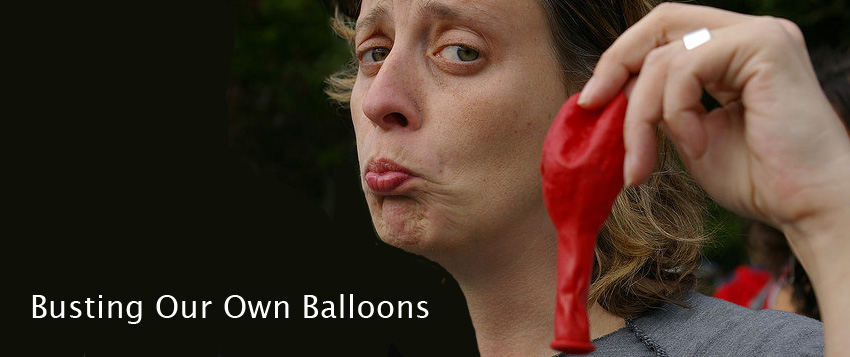 A Story of Two Birds
A Story of Two Birds
This week’s gospel is Jesus’ story of two men praying before God. It is the parable of the Pharisee and the Tax Collector.
The Pharisee prays loudly, thanking God for his life filled with riches, finery and the prestige of having many important friends. He’s a big shot in the church. God should be proud to hear his prayer.
The tax collector is of low rank in the community. He prays to God in humility.
Today’s lesson is a parallel story. Who doesn’t like a story?
The Story of the Peacock and Mockingbird
Once upon the time, there was beautiful peacock who lived in a large fenced yard in the center of a very big farm. The peacock did not mind being fenced in. The farmer fed him well and often paused from his work to admire his pet bird’s beauty.
The peacock enjoyed the farmer’s attention. He was proud of his long blue neck and his long feathery tail of splendid gold, green and blue. Whenever he saw the farmer coming his way, he began strutting about the farmyard, dragging his beautiful feathers behind. At just the right moment, he would raise his tail and spread its feathers like a fan. The farmer would always smile with pride.
Nearby, in the branches of a large bush, lived a small gray bird. He often sat on a tiny twig and watched the peacock put on his show. He longed for the farmer’s attention. He’d fly above the farmyard, occasionally swooping low. “Much as I would like the farmer to notice me, I will never be as beautiful as the peacock,” thought the little gray bird. Still, he kept flying, hoping that one day, the farmer would smile at him with the same pride he had for the more handsome bird.
“Hm!” the peacock thought. “Look at that puny little bird. His feathers are so short and they have no color. Of course, the farmer likes me best! Why doesn’t the little gray bird go back to his nest and let the farmer enjoy my show?”
One sunny, spring day the farmer put down his how and leaned against the farmyard fence for a rest.
The peacock took notice and began strutting across the yard. Just as he was about to spread his beautiful tail feathers, the little gray bird began flying above him in wide circles.
“It’s time I put that little gray bird in his place,” the peacock thought. “This is my farmyard. The farmer wants to see me! I am beautiful. He is so very plain.”
The peacock raised his voice to keep the farmer’s attention.
“ACK! ACK! ACK!”
Aha! It was working. The farmer was delighted.
“ACK! ACK! ACK!”
But then the farmer turned his head to follow a different sound. It was very similar to the peacock’s call but so much softer.
“Ack! Ack! Ack!”
The farmer saw the little gray bird flying in circles above the farmyard. He couldn’t help but watch the little gray bird’s graceful flight.
The little gray bird landed on a nearby branch and repeated the peacock’s call ever so softly. “Ack! Ack! Ack!” The softer the little gray bird called, the more carefully the farmer seemed to listen.
The peacock was jealous. “Is he mocking me?” he wondered. His dark eyes, circled with white, flashed in anger. He strutted toward the bush and spread his beautiful tail, intent on blocking any view of the little gray bird. The farmer moved closer to the bush, straining to see around him.
“ACK! ACK! ACK!” The peacock called as loudly as he could, but the farmer’s eyes were on the little gray bird sitting in the bush.
“Why isn’t he paying attention to me?” the peacock thought. “Is he hard of hearing?”
He stopped to consider whether or not his question made sense. But the little gray bird did not stop. The little gray bird repeated his call. “Ack! Ack! Ack!” The farmer beamed with pleasure at the little gray bird’s delicate echo.
Then the little gray bird changed the pitch. One “Ack” was high. The next “Ack” was low. The third “Ack” was somewhere in between.
“He’s ruining my song,” the peacock thought.
But that was just the beginning. Soon the little gray bird added new sounds to his song. He tweeted and twittered. He rasped and he whirred.
The farmer applauded in delight.
The peacock strutted toward the farmer. He stretched his beautiful blue neck and lifted his tiny head. He tried to echo the little gray bird’s song. But all that came from his mouth was a harsh, ugly “ACK! ACK! ACK!”
The little gray bird stopped singing. He flew a few times around the farmyard. The peacock spun in one direction and then the other as he, too, watched the little gray bird.
Then the little gray bird flew off. The farmer followed the plain gray bird’s soft, delicate call through the wide fields.
The peacock watched from behind the fence. For the first time he wished he could trade his beauty for feathers that could fly. His beautiful tail dragged in the dust as he strutted slowly around the yard with neither the farmer nor the little gray bird interested in his splendor.
Talk to your congregation about what God expects of us when we talk to him.
You can post these links of a strutting peacock and singing mockingbird on your website. The peacock sings at about the 13-second mark. The mockingbird never stops singing. You might even play the recordings for your congregation.
http://www.youtube.com/watch?v=9MhZPqHeEAQ
http://www.youtube.com/watch?v=CMpe34Aign4
You can make stick puppets of a peacock and mockingbird from photos found easily on the web. If you use the story with children (or even with adults) you could divide the group with one singing the harsh peacock ACKs and the other singing more delicate Acks whenever you point to them.
Have fun!



